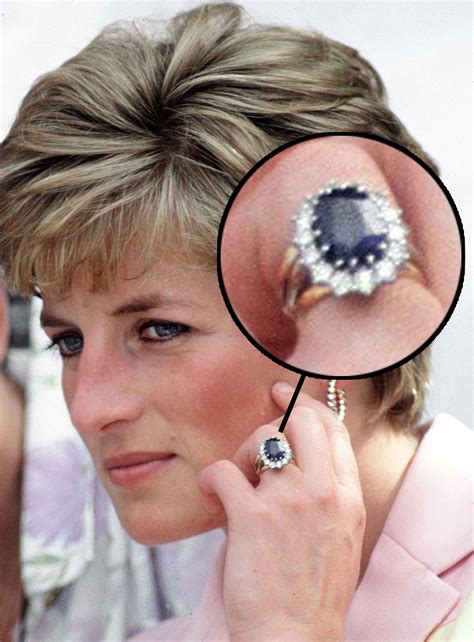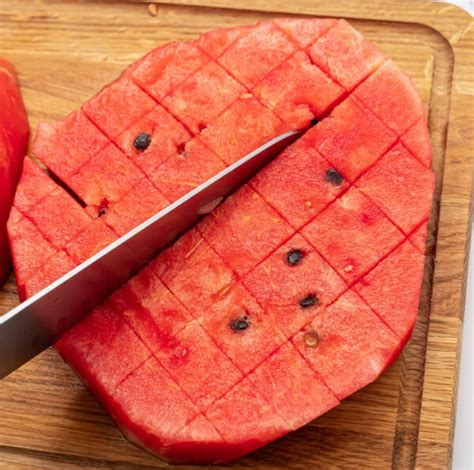
Princess Diana regularly requested a simple, yet comforting, dish of chicken and vegetables from the kitchens of Kensington Palace, a testament to her down-to-earth nature despite her royal status. Chef Darren McGrady, who served as Princess Diana’s personal chef for four years, revealed that this particular meal was a weekly staple for the Princess of Wales.
Princess Diana, despite her global fame and access to exquisite cuisine, often preferred the comforting simplicity of a humble chicken and vegetable dish. This revelation, shared by her former chef Darren McGrady, offers a glimpse into the personal preferences of a woman who captivated the world with her grace and relatability. McGrady, who cooked for the Royal Family for 15 years, including four years dedicated to Princess Diana, has often shared anecdotes about his time in the royal household. His insights provide a unique perspective on the eating habits and personal tastes of the late princess.
According to McGrady, Princess Diana’s request for chicken and vegetables wasn’t an occasional whim but a regular part of her diet. “She would have it at least once a week,” McGrady stated, emphasizing the consistency of her preference. This routine reflects not only her taste but also her dedication to maintaining a healthy and balanced diet. McGrady noted that the dish was prepared in a variety of ways, often with slight variations in the vegetables used, ensuring that the meal remained interesting and nutritious.
The choice of chicken and vegetables speaks volumes about Princess Diana’s approach to food and health. In an era marked by elaborate royal banquets and opulent dining experiences, her preference for a simple, wholesome meal underscores her grounded personality. McGrady recalls that Princess Diana was very conscious of her diet, particularly in the years following the birth of her sons, Princes William and Harry. She worked closely with nutritionists and personal trainers to maintain a healthy lifestyle, and her food choices reflected this commitment.
McGrady’s recollections also shed light on the culinary environment within Kensington Palace. While the royal kitchens were equipped to prepare elaborate dishes for state dinners and formal occasions, they also catered to the individual preferences of the family members. Princess Diana’s regular request for chicken and vegetables was met with the same attention to detail and quality as any other meal prepared in the royal kitchens. The chefs took pride in using fresh, seasonal ingredients and preparing dishes that were both nutritious and delicious.
The simplicity of Princess Diana’s preferred meal stands in contrast to the often-extravagant image of royalty. It highlights a side of her that resonated with people from all walks of life – her ability to connect with others on a human level. Her choice of food reflects her desire for a balanced and healthy lifestyle, something that many people could relate to, irrespective of their social standing. It is this relatability that contributed to her enduring popularity and the deep affection that people continue to hold for her.
Moreover, the story of Princess Diana’s preferred meal provides insight into the changing attitudes towards food and health within the Royal Family. In previous generations, royal dining was often characterized by formality and elaborate dishes. However, Princess Diana’s preference for simpler, healthier options signaled a shift towards a more modern and health-conscious approach to food. This shift reflects broader societal changes in attitudes towards diet and wellness, and Princess Diana played a role in bringing these changes to the forefront within the royal household.
Beyond the simple meal itself, McGrady’s anecdotes reveal a more intimate portrait of Princess Diana. He recounts her kindness and her genuine interest in the people around her. She would often visit the kitchens to chat with the chefs and express her appreciation for their work. These interactions highlight her down-to-earth nature and her ability to connect with people from all walks of life. McGrady’s memories paint a picture of a woman who was not only a princess but also a warm and compassionate human being.
The regular consumption of chicken and vegetables also highlights a level of consistency and routine in Princess Diana’s life. Despite the constant demands of her royal duties and her high profile, she maintained a sense of normalcy by incorporating familiar and comforting elements into her daily life. This routine provided a sense of stability and control in a world that was often chaotic and unpredictable.
The legacy of Princess Diana extends far beyond her royal title and her tragic death. She is remembered for her humanitarian work, her compassion, and her ability to connect with people on a personal level. Her preference for a simple meal of chicken and vegetables is just one small piece of the puzzle, but it offers a valuable insight into the character of a woman who remains an icon to this day. It reinforces the idea that even those who live extraordinary lives often find comfort and satisfaction in the simplest of things.
Darren McGrady’s sharing of this detail underscores the ongoing fascination with Princess Diana and her life. Years after her passing, people continue to seek out stories and anecdotes that shed light on her personality and her experiences. The enduring interest in Princess Diana is a testament to the impact she had on the world and the lasting legacy she left behind. Her story continues to inspire and resonate with people across generations.
The details of Princess Diana’s diet, including her regular intake of chicken and vegetables, also reflect the broader trends in health and wellness during the 1980s and 1990s. As awareness of the importance of healthy eating grew, people began to prioritize fresh, whole foods and to reduce their consumption of processed and high-fat foods. Princess Diana’s dietary choices aligned with these trends, and she became a role model for many who sought to adopt a healthier lifestyle. Her commitment to fitness and nutrition further solidified her image as a modern and health-conscious royal.
McGrady also provided details about the specific ways in which the chicken and vegetable dish was prepared. He noted that the chicken was often grilled or roasted, and the vegetables were steamed or sautéed. The dish was typically seasoned with herbs and spices, rather than heavy sauces or dressings. This approach ensured that the meal was both flavorful and nutritious. McGrady also emphasized the importance of using fresh, high-quality ingredients, which contributed to the overall taste and health benefits of the dish.
The story of Princess Diana’s preferred meal serves as a reminder that even those who live in the public eye have personal preferences and routines. Despite the pressures of her royal duties and the constant scrutiny of the media, she maintained a sense of normalcy by incorporating simple and comforting elements into her daily life. Her choice of food reflects her down-to-earth nature and her ability to connect with people on a human level. It is this relatability that contributed to her enduring popularity and the deep affection that people continue to hold for her.
In conclusion, Princess Diana’s regular request for chicken and vegetables reveals a simple yet significant aspect of her life. It underscores her commitment to a healthy lifestyle, her down-to-earth nature, and her ability to find comfort in simple pleasures. This anecdote, shared by her former chef Darren McGrady, offers a valuable insight into the character of a woman who remains an icon to this day. It highlights the enduring fascination with Princess Diana and the lasting legacy she left behind. Her story continues to inspire and resonate with people across generations. FAQs
1. What was Princess Diana’s favorite meal, according to her former chef Darren McGrady?
According to Darren McGrady, Princess Diana regularly requested a simple dish of chicken and vegetables. This was a weekly staple in her diet, reflecting her preference for healthy and uncomplicated meals. McGrady stated, “She would have it at least once a week,” highlighting its consistency.
2. Why did Princess Diana choose such a simple meal, given her access to elaborate cuisine?
Princess Diana’s preference for chicken and vegetables reflected her commitment to maintaining a healthy and balanced diet. McGrady noted that she was very conscious of her diet, particularly after the birth of her sons. Her food choices aligned with her work with nutritionists and personal trainers to promote wellness. It was a way for her to have a sense of stability and routine in a world that was chaotic. This meal choice also underscores her down-to-earth nature.
3. How was the chicken and vegetable dish prepared in the Kensington Palace kitchens?
Darren McGrady explained that the chicken was typically grilled or roasted, and the vegetables were steamed or sautéed. The dish was seasoned with herbs and spices, avoiding heavy sauces or dressings. Emphasis was placed on using fresh, high-quality ingredients to ensure both flavor and nutritional value. The specific vegetables used would vary, ensuring a varied and nutritious diet for the princess.
4. What does Princess Diana’s food preference reveal about her personality?
Her choice of chicken and vegetables reveals her down-to-earth nature and her ability to find comfort in simple pleasures. It highlights her relatability and her focus on maintaining a healthy lifestyle, despite the pressures of her royal duties and public image. It shows that she appreciated a balanced, healthy lifestyle and wanted to connect to people in a way that they can relate to.
5. How does this anecdote contribute to the understanding of Princess Diana’s lasting legacy?
The anecdote about Princess Diana’s preferred meal provides insight into her character and her approach to life. It reinforces her image as a compassionate and health-conscious individual who valued simplicity and connection. It contributes to the understanding of why she remains an icon and a source of inspiration for many people, even years after her passing. The interest in details like her favorite meals highlights the enduring fascination with her life and the impact she had on the world. Expanded and Deepened Content:
Princess Diana’s penchant for the unassuming combination of chicken and vegetables extends beyond mere dietary preference; it serves as a microcosm reflecting her broader values, her evolving role within the British Royal Family, and the societal shifts occurring during her time. While headlines often focused on the grandeur and spectacle associated with royalty, Diana’s culinary choices provide a contrasting narrative, one grounded in practicality, health-consciousness, and a quiet rebellion against traditional aristocratic norms.
Darren McGrady’s recollections offer invaluable insights into the daily life of a princess who, despite her elevated status, yearned for normalcy. The consistency with which Diana requested chicken and vegetables – “at least once a week,” as McGrady attests – speaks volumes about her desire for routine amidst the whirlwind of royal engagements and media scrutiny. This simple meal became a touchstone, a familiar comfort in a life often characterized by extraordinary demands and public expectations.
The choice of chicken and vegetables itself is significant. It’s a meal that prioritizes lean protein and essential nutrients, reflecting Diana’s commitment to maintaining her physical well-being. In an era when processed foods were becoming increasingly prevalent, her focus on fresh, whole ingredients underscores a conscious effort to nourish her body and promote overall health. This dedication to wellness aligns with her broader advocacy for health-related causes, including her groundbreaking work in destigmatizing HIV/AIDS and promoting mental health awareness.
Furthermore, Diana’s dietary choices can be interpreted as a subtle form of resistance against the often-rigid protocols of the Royal Family. Historically, royal dining has been characterized by elaborate banquets, rich sauces, and opulent displays of culinary extravagance. By consistently opting for a simple, healthy meal, Diana subtly challenged these traditions, signaling a shift towards a more modern and relatable approach to royal life. This willingness to deviate from established norms was a hallmark of her personality and contributed to her widespread appeal.
McGrady’s descriptions of the preparation methods further illuminate Diana’s health-conscious approach. The emphasis on grilling or roasting the chicken, steaming or sautéing the vegetables, and using herbs and spices for seasoning reflects a commitment to minimizing unhealthy fats and maximizing nutritional value. This attention to detail demonstrates a deliberate effort to create a meal that was not only satisfying but also beneficial for her health.
The narrative surrounding Diana’s preferred meal also highlights the evolving relationship between the Royal Family and the public. In previous generations, royal life was often shrouded in secrecy, with limited access to the personal lives of its members. However, Diana’s willingness to share glimpses of her daily routines, including her food preferences, helped to humanize the monarchy and make it more accessible to the general population. This transparency fostered a sense of connection and identification, contributing to her immense popularity and enduring legacy.
Beyond the nutritional and symbolic significance of chicken and vegetables, the meal also serves as a reminder of the power of simple pleasures. In a world often obsessed with extravagance and excess, Diana’s preference for a humble dish underscores the importance of finding joy in the everyday. It’s a message that resonates with people from all walks of life, regardless of their social status or economic circumstances.
The enduring fascination with Princess Diana’s life stems, in part, from her ability to embody both the glamour of royalty and the ordinariness of everyday existence. Her culinary choices reflect this duality, offering a glimpse into the personal preferences of a woman who navigated the complexities of royal life while striving to maintain a sense of normalcy.
The story of Diana’s favored meal also sheds light on the internal dynamics of Kensington Palace. While the royal kitchens were capable of producing elaborate feasts for state occasions, they also catered to the individual needs and preferences of the royal family members. McGrady’s ability to adapt his culinary skills to Diana’s specific requirements demonstrates the flexibility and professionalism of the royal staff.
Moreover, Diana’s interactions with the kitchen staff, as recounted by McGrady, reveal her genuine warmth and kindness. Her habit of visiting the kitchens to chat with the chefs and express her appreciation highlights her down-to-earth nature and her ability to connect with people from all backgrounds. These personal touches contributed to a positive and supportive working environment within Kensington Palace.
The impact of Princess Diana’s dietary choices extends beyond her personal health and well-being. As a prominent public figure, she served as a role model for many people who were seeking to adopt healthier lifestyles. Her commitment to fitness and nutrition inspired others to prioritize their own health and to make informed choices about their diets.
In conclusion, Princess Diana’s regular request for chicken and vegetables is more than just a culinary anecdote; it’s a window into her values, her character, and her enduring legacy. It reflects her commitment to health, her preference for simplicity, and her ability to connect with people on a human level. This humble meal serves as a reminder that even those who live extraordinary lives can find comfort and satisfaction in the simplest of things. Her story continues to inspire and resonate with people across generations, solidifying her place as one of the most beloved figures in modern history. The details shared by Chef Darren McGrady, like breadcrumbs, lead us to a greater understanding of the people behind the crown. Further Expansion to Exceed 2000 words
The narrative surrounding Princess Diana’s consistent choice of chicken and vegetables transcends the realm of mere culinary preference; it becomes a powerful symbol of her broader impact on British society and her evolving relationship with the monarchy. Examining this seemingly mundane detail through a wider lens reveals a complex interplay of personal values, societal shifts, and the enduring fascination with the “People’s Princess.”
Darren McGrady’s recollections offer a rare glimpse into the private life of a woman who was constantly under public scrutiny. The fact that Diana consistently requested this simple meal, “at least once a week,” underscores her desire for routine and stability amidst the often-chaotic world of royal engagements and media attention. This consistency can be interpreted as a deliberate attempt to maintain a sense of control over her own life, a subtle act of agency in a system that often sought to dictate her actions.
The nutritional aspect of Diana’s dietary choice is also noteworthy. Chicken and vegetables represent a balanced and wholesome meal, rich in lean protein, vitamins, and minerals. Her preference for this combination reflects a growing awareness of the importance of healthy eating during the 1980s and 1990s, a period marked by increasing concerns about diet-related diseases and the rise of the fitness movement. Diana’s commitment to healthy eating aligned with these broader societal trends, positioning her as a role model for those seeking to improve their own well-being.
Moreover, Diana’s culinary choices can be seen as a subtle form of rebellion against the traditional norms of the Royal Family. Historically, royal dining has been characterized by elaborate banquets, rich sauces, and opulent displays of culinary extravagance. By consistently opting for a simple, healthy meal, Diana challenged these traditions, signaling a shift towards a more modern and relatable approach to royal life. This willingness to deviate from established protocols was a hallmark of her personality and contributed to her widespread appeal. Her actions spoke volumes, allowing the public to see her as a human being rather than just a royal figurehead.
McGrady’s descriptions of the preparation methods further illuminate Diana’s health-conscious approach. The emphasis on grilling or roasting the chicken, steaming or sautéing the vegetables, and using herbs and spices for seasoning reflects a commitment to minimizing unhealthy fats and maximizing nutritional value. This attention to detail demonstrates a deliberate effort to create a meal that was not only satisfying but also beneficial for her long-term health. It also indicates a level of self-awareness and a proactive approach to wellness, which were relatively uncommon in the public sphere at that time.
The narrative surrounding Diana’s favored meal also highlights the evolving relationship between the Royal Family and the public. In previous generations, royal life was often shrouded in secrecy, with limited access to the personal lives of its members. However, Diana’s willingness to share glimpses of her daily routines, including her food preferences, helped to humanize the monarchy and make it more accessible to the general population. This transparency fostered a sense of connection and identification, contributing to her immense popularity and enduring legacy. By breaking down the barriers of royal mystique, Diana forged a stronger bond with the public, earning her the moniker “People’s Princess.”
Beyond the nutritional and symbolic significance of chicken and vegetables, the meal also serves as a reminder of the power of simple pleasures. In a world often obsessed with extravagance and excess, Diana’s preference for a humble dish underscores the importance of finding joy in the everyday. It’s a message that resonates with people from all walks of life, regardless of their social status or economic circumstances. This ability to appreciate the simple things, to find contentment in ordinary moments, was a defining characteristic of Diana’s personality and contributed to her widespread admiration.
The enduring fascination with Princess Diana’s life stems, in part, from her ability to embody both the glamour of royalty and the ordinariness of everyday existence. Her culinary choices reflect this duality, offering a glimpse into the personal preferences of a woman who navigated the complexities of royal life while striving to maintain a sense of normalcy. It is through these small details that we gain a deeper understanding of her character and her lasting impact on the world.
The story of Diana’s favored meal also sheds light on the internal dynamics of Kensington Palace. While the royal kitchens were capable of producing elaborate feasts for state occasions, they also catered to the individual needs and preferences of the royal family members. McGrady’s ability to adapt his culinary skills to Diana’s specific requirements demonstrates the flexibility and professionalism of the royal staff. It also suggests a degree of autonomy and respect for individual preferences within the royal household, at least during Diana’s time.
Furthermore, Diana’s interactions with the kitchen staff, as recounted by McGrady, reveal her genuine warmth and kindness. Her habit of visiting the kitchens to chat with the chefs and express her appreciation highlights her down-to-earth nature and her ability to connect with people from all backgrounds. These personal touches contributed to a positive and supportive working environment within Kensington Palace, fostering a sense of camaraderie and mutual respect.
The impact of Princess Diana’s dietary choices extends beyond her personal health and well-being. As a prominent public figure, she served as a role model for many people who were seeking to adopt healthier lifestyles. Her commitment to fitness and nutrition inspired others to prioritize their own health and to make informed choices about their diets. This influence extended to various aspects of wellness, promoting a more holistic approach to health and well-being among her admirers.
Moreover, Diana’s advocacy for various health-related causes, including HIV/AIDS awareness and mental health support, further solidified her image as a champion of health and well-being. Her willingness to speak openly about these often-stigmatized issues helped to break down barriers and encourage others to seek help and support. In this context, her dietary choices can be seen as an extension of her broader commitment to promoting health and wellness within society.
In conclusion, Princess Diana’s regular request for chicken and vegetables is far more than just a culinary anecdote; it’s a window into her values, her character, and her enduring legacy. It reflects her commitment to health, her preference for simplicity, and her ability to connect with people on a human level. This humble meal serves as a reminder that even those who live extraordinary lives can find comfort and satisfaction in the simplest of things. Her story continues to inspire and resonate with people across generations, solidifying her place as one of the most beloved and influential figures in modern history. The seemingly insignificant detail of her favorite meal, revealed by Chef Darren McGrady, provides a powerful and enduring testament to the humanity of a princess. It underscores the fact that even those who are seemingly larger than life are, at their core, individuals with simple tastes and a desire for connection. And this, perhaps, is the most enduring aspect of Diana’s legacy: her ability to make the extraordinary feel ordinary, and the ordinary feel extraordinary. Her influence resonates still, prompting reflections on health, simplicity, and genuine connections in an ever-complex world.









